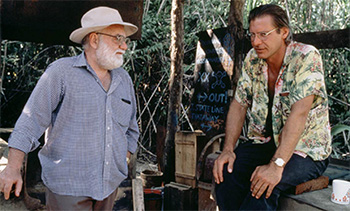… for Random Weirdness
Tip #862: How the Lockdown Affects Production
Larry Jordan – LarryJordan.com
This article describes ways to continue production during lockdown.


The folks at TV Technology released an article on “How Did the Lockdown Impact Video Production Workflows.” This is an excerpt.
Joseph Hopkins writes:
A number of major video productions have managed to continue successfully despite having their workflows disrupted by COVID-19 and the restrictions lockdown measures enforce. One of the main reasons some producers endure is because their teams have been able to adapt to working in the “new normal” by utilizing a combination of emerging technologies and time-tested IP transport solutions.
Yet, these are not simply band-aid solutions, but instead are examples of an acceleration in the evolution of production workflows taking place across the media and sports industries. This transition to IP infrastructure has exposed new capabilities not available through traditional satellite and is proving to be a framework on which to build solutions that will overcome the challenges facing the media industry today, and in the future.
Here’s the link to the full article.













